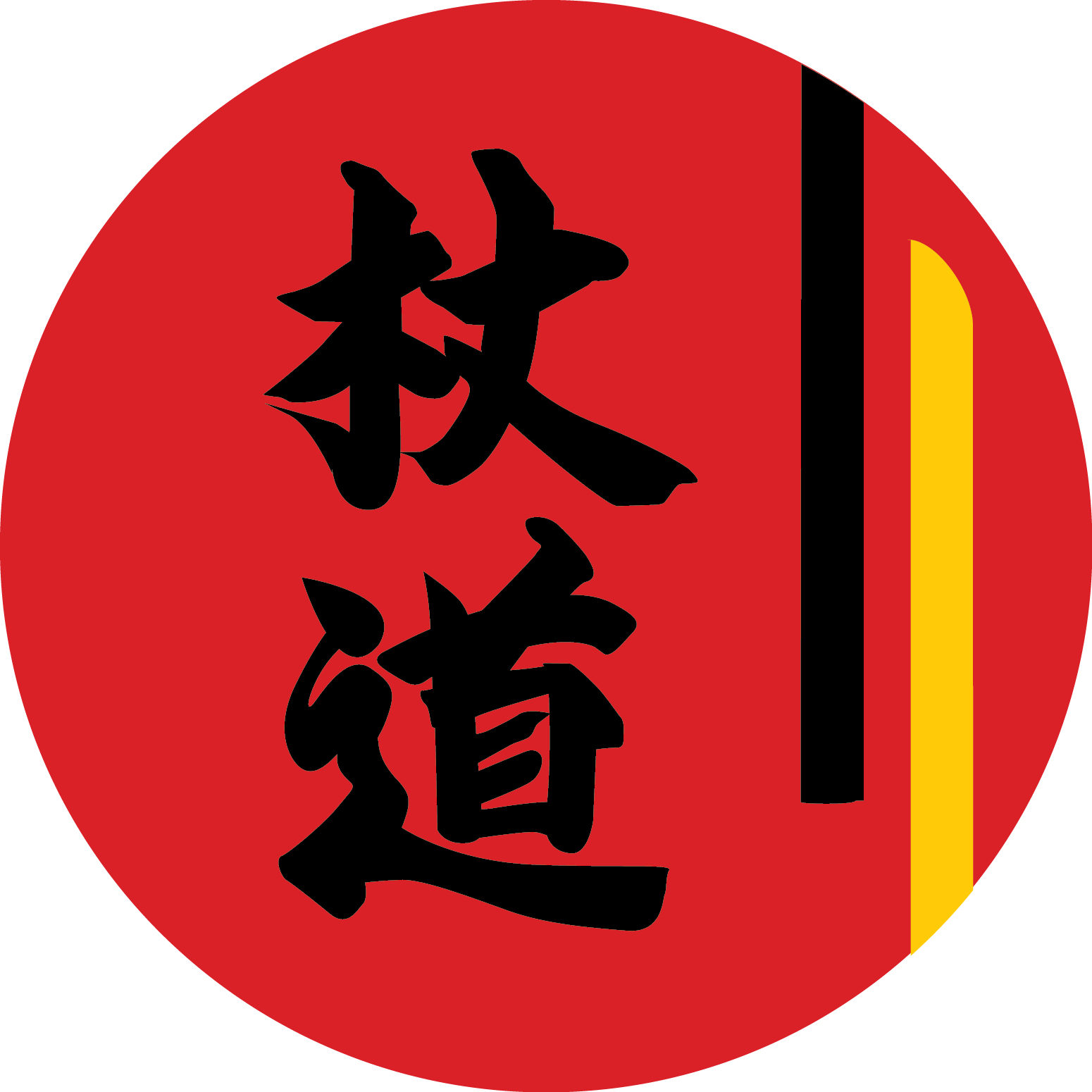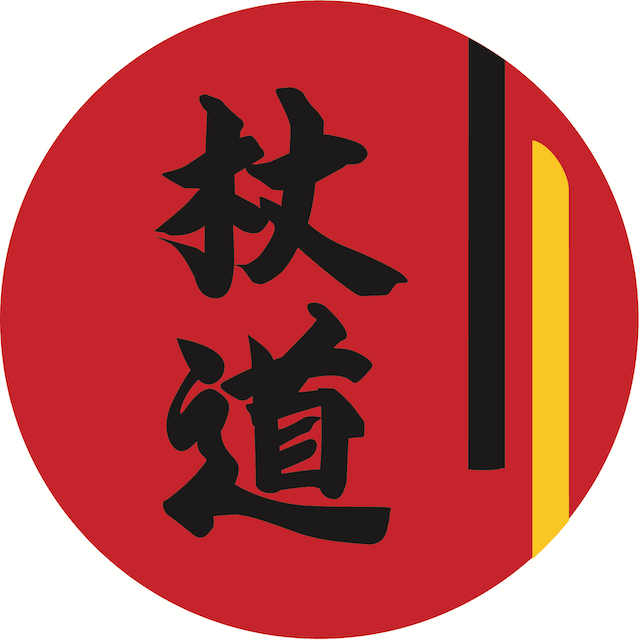JODO
JODO - THE WAY OF THE STICK
Jodo, the way of the stick, is a Japanese martial art in which one defends oneself against a swordsman with a jo (wooden stick). Unlike the sword, both ends can be used on the stick. Depending on how the jo is held, the maai (distance to the opponent) can be varied. Kicks, punches and swings can be executed. A hit with the jo can bend or break a sword blade.
Jodo is mainly practiced in pairs, with one partner taking the place of the uchidachi (sword fighter) and the other the shijo (stick fighter). The traditional forms of training are, as in many ancient martial arts, kata. These are combinations of techniques that have been precisely determined from tradition.
The training takes place with contact and without protectors. For this reason, the sharp katana is replaced by a bokken/bokuto (wooden sword).
During training, the refinement of the techniques is practiced to perfection. This can be achieved through constant repetition. Another equally important goal in Jodo is personality training. Treating each other with respect is a prerequisite.
Jodo creates a stronger awareness of himself and the environment through the intensive examination of himself. It can boost self-confidence and improve mindfulness.
HISTORY
HISTORY OF JODO
There are various legends surrounding the origin of the Shindo Muso Ryu. A lore is presented below:
Muso Gonnosuke was a samurai who emerged undefeated from many duels.
In Edo around 1600 he met Japan's most famous sword master, Miyamoto Musashi. He was known for his techniques in which he used long and short swords at the same time. In the duel, Musashi defeated Gonnosuke with his two-sword technique. Muso did not let this defeat rest.
After several years of wandering and practicing, he withdrew into solitude and developed a new weapon, the 128 cm long and 24 mm in diameter jo (wooden stick).
In the new martial art, which he called Jojutsu, he introduced the thrusting techniques of the yari (spear), the round swings of the naginata (long lance) and the striking movements from the fight with the bo (long stick) and the katana (sword). According to legend, Muso Gonnosuke taught Miyamoto Musashi his only defeat in a second duel with the Jo.
Until the beginning of the 20th century, the Shindo Muso Ryu (traditional Jojutsu school) was handed down exclusively in Fukuoka Prefecture on Kyushu, the southern main island of Japan.
At the same time, several weapon systems were added to the school during this period: Shinto Ryu Kenjutsu (sword/sword), Uchida Ryu Tanjojutsu (short stick/sword), Isshin Ryu Kusarigamajutsu (sickle with weight on a chain/sword), Ikkaku Ryu Juttejutsu (" Sword Catcher"/sword) and Ittatsu Ryu Hojojutsu (binding techniques).
In the first half of the 20th century, Takaji Shimizu, one of the most important masters of the school, moved to Tokyo. There he came into contact with representatives of modern kendo and then made significant changes to the previously known forms. Since then, there have been two main branches of Shindo Muso Ryu: the Fukuoka line and the Tokyo line.
In 1968, the Zen Nihon Kendo Renmei (All Japanese Kendo Federation) presented their ZNKR Jodo, consisting of twelve selected kata and basic techniques. According to the rules of the International Kendo Federation (FIK), dan grades can now be obtained worldwide and jodo championships can be held.
For the majority of practitioners today, jodo training begins with learning the ZNKR Jodo before moving on to the Koryu (old school) of Shindo Muso Ryu.
KATA
Typically, at the beginning of the training, the Kihon (basic exercises) are practiced as Tandoku Dosa (individual exercise) or as Soutai Dosa (partner exercise). This is followed by the kata training of the ZNKR forms.
The Koryu-Kata are practiced by advanced Jodo practitioners.
KIHON
| KIHON | ||
|---|---|---|
| Ipponme | Honteuchi | Forward straight punch (execute left & right) |
| Nihonme | Gyakuteuchi | Reverse hand punch (perform left & right) |
| Sanbonme | Hikiotoshiuchi | Pull Back & Sliding Slam Down (Run Left & Right) |
| Yonhonme | Kaeshitsuki | (Turn) around and push into the solar plexus (perform left & right) |
| Gohonme | Gyakutetsuki | Strike (in the solar plexus) with the reversed hand |
| Ropponme | Makiotoshi | Wrap and sweep down |
| Nanahonme | Kuritsuke | Pin and stab |
| Happonme | Kurihanashi | Throw away |
| Kyûhonme | Taiatari | Attack with the whole body |
| Jupponme | Tsukihazushiuchi | Pick up a push, deflect, block, hit |
| Jûipponme | Dôbaraiuchi | Block to the side and body punch |
| Jûnihonme | Taihazushiuchi | Body pull back and hit (do left & right) |
ZNKR - JODO - KATA
| ZNKR | ||
|---|---|---|
| Ipponme | Tsuki Zue | The stick that reaches the goal |
| Nihonme | Suigetsu | Water - Moon (Solar Plexus) |
| Sanbonme | Hissage | withdraw |
| Yonhonme | Shamen | Forming a slope (sideways punch to the head) |
| Gohonme | Sakan | Left thrust with the sword |
| Ropponme | Monomi | Watchtower/pay attention/be on the lookout |
| Nanahonme | Kasumi | Poor Vision Haze/Technique/Temple |
| Happonme | Tachi Otoshi | Lower/hit on/the sword |
| Kyûhonme | Rai Uchi | Thunder Clap/Stormy Clap |
| Jupponme | Seigan | Straight to the eyes |
| Jûipponme | Midare Dome | Stop the chaos/end a fight |
| Jûnihonme | Ran Ai | From chaos to harmony |
KORYU - KATA
| OMOTE | ||
|---|---|---|
| Ipponme | Tachi otoshi | On/lower/hit the sword |
| Nihonme | Tsuba wari | Break the tsuba |
| Sanbonme | Tsuki zue | The stick that reaches the goal |
| Yonhonme | Hissage | withdraw |
| Gohonme | Sakan | Left thrust (spleen of Shidachi) with the sword |
| Ropponme | Ukan | Right thrust (Liver of Shidachi) with the sword |
| Nanahonme | Kasumi | Poor Vision Haze/Technique/Temple |
| Happonme | Monomi | Watchtower/pay attention/be on the lookout |
| Kyûhonme | Kasa no shita | Under the bamboo hat |
| Jupponme | Ichi rei | A single hit/single arc |
| Jûipponme | Neya no uchi | In the bedroom |
| Jûnihonme | Hoso michi | Narrow Path/Narrow Path |
| CHUDAN | ||
|---|---|---|
| Ipponme | Ichi riki | A single power |
| Nihonme | Oshi zume | Fight against a brick wall |
| Sanbonme | Midare dome | Stop the chaos/end a fight |
| Yonhonme | Ushiro zue zen | 1-The stick to the back/stick to the back |
| Ushiro zue go | 2-The stick to the back/stick to the back | |
| Gohonme | Taisha | The bike that awaits |
| Ropponme | Kengome | Move into the gap |
| Nanahonme | Kirikake | Unsuccessful/aborted cut |
| Happonme | Shinshin | Constant progress |
| Kyûhonme | Rai uchi | Thunder Clap/Stormy Clap |
| Jupponme | Yokogiri dome | Block a side cut |
| Jûipponme | Harai dome | Sweep - stop (lock a transverse cut) |
| Jûnihonme | Seigan Kiyo | Straight to the eyes |
In addition to the forms listed here, the Jodo curriculum contains other kata series.
This includes Kage, Samidare, Gohon No Midare und Okuden.
In addition to the Jo, other weapons are also used.
- Uchida Ryu Tanjo Jutsu (short stick) Ikkaku Ryu Jitte Jutsu (bludgeoning / piercing weapon) Shinto Ryu Kenjutsu (sword) Isshin Ryu Kusarigama Jutsu (sickle on chain) Ittatsu Ryu Hojo Jutsu (bondage techniques)
However, these forms are rarely taught in Europe.






